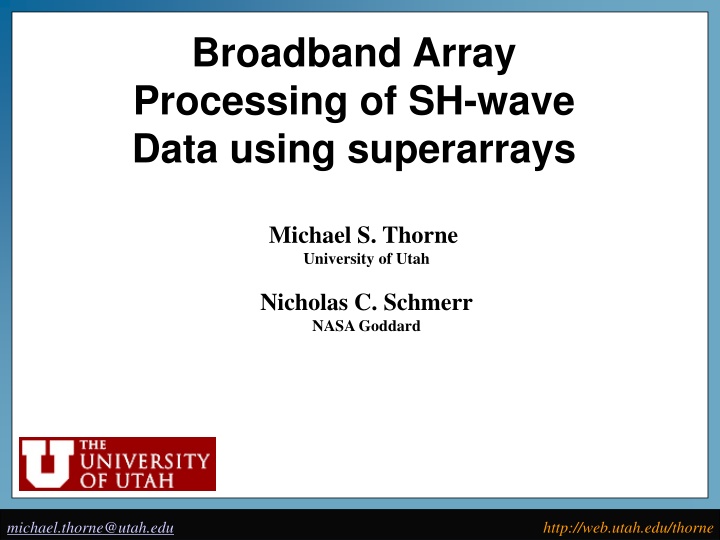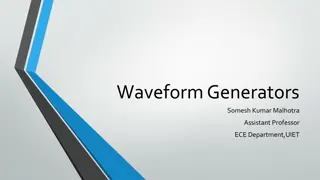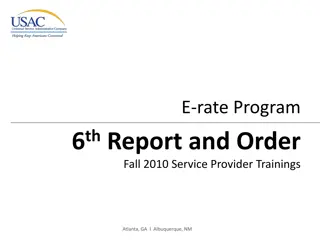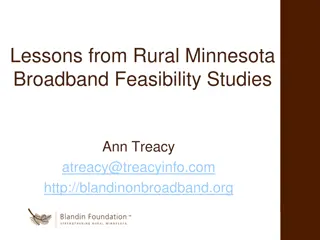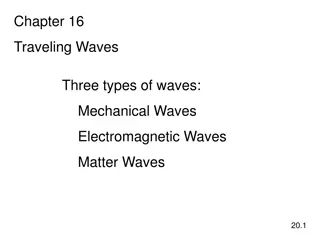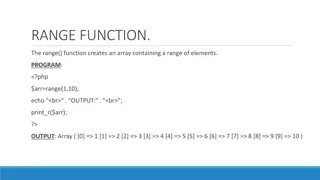Broadband Array Processing of SH-wave Data Using Superarrays
Broadband array processing of SH-wave data using superarrays at High Lava Plains (HLP) with a flexible array of 118 broadband stations deployed between 2006-2009. The processing involves transverse component displacement seismograms aligned and normalized to unity on direct-S, and Vespagrams analysis for seismic events. Detailed data for specific events such as depth, magnitude, and distance are included in the processing. The study also examines D discontinuity topography.
Uploaded on Oct 02, 2024 | 0 Views
Download Presentation

Please find below an Image/Link to download the presentation.
The content on the website is provided AS IS for your information and personal use only. It may not be sold, licensed, or shared on other websites without obtaining consent from the author.If you encounter any issues during the download, it is possible that the publisher has removed the file from their server.
You are allowed to download the files provided on this website for personal or commercial use, subject to the condition that they are used lawfully. All files are the property of their respective owners.
The content on the website is provided AS IS for your information and personal use only. It may not be sold, licensed, or shared on other websites without obtaining consent from the author.
E N D
Presentation Transcript
Broadband Array Processing of SH-wave Data using superarrays Michael S. Thorne University of Utah Nicholas C. Schmerr NASA Goddard michael.thorne@utah.edu michael.thorne@utah.edu http://web.utah.edu/thorne
High Lava Plains (HLP) Flexible Array Final Array: 118 broadband stations Deployment: ~ 2006-2009 Station spacing: ~ 20 km Aperature: ~400 km NW-SE line. http://www.dtm.ciw.edu/research/HLP/ michael.thorne@utah.edu michael.thorne@utah.edu http://web.utah.edu/thorne
Scd Array Processing - Data michael.thorne@utah.edu michael.thorne@utah.edu http://web.utah.edu/thorne
Scd Array Processing - Data Transverse component displacement seismograms. Up to 94 traces used in a single event. Other stations also used if within HLP circumference. Aligned and normalized to unity on direct-S. BP filtered 1-20 s. michael.thorne@utah.edu michael.thorne@utah.edu http://web.utah.edu/thorne
Scd Array Processing - Vespagrams 200806292053 michael.thorne@utah.edu michael.thorne@utah.edu http://web.utah.edu/thorne
Scd Array Processing - Vespagrams michael.thorne@utah.edu michael.thorne@utah.edu http://web.utah.edu/thorne
Scd Array Processing - Data Event: 200707161417 Depth: 350 km Mw: 6.8 Avg Distance: 75.6 deg michael.thorne@utah.edu michael.thorne@utah.edu http://web.utah.edu/thorne
Scd Array Processing - Data Event: 200707161417 Depth: 350 km Mw: 6.8 Avg Distance: 75.6 deg michael.thorne@utah.edu michael.thorne@utah.edu http://web.utah.edu/thorne
200908091055 michael.thorne@utah.edu michael.thorne@utah.edu http://web.utah.edu/thorne
D discontinuity topography Hutko et al. michael.thorne@utah.edu michael.thorne@utah.edu http://web.utah.edu/thorne
Scd Array Processing - Observations 11 good events Roughly 2 years data Central America D thickness: 279-290 km dVs = 1.5-3.0% Bering Sea D thickness: 248-260 km dVs = 1.5-2.0% Radial Components: No Scd visible. Some observations at shorter distances than Scd normally observed. michael.thorne@utah.edu michael.thorne@utah.edu http://web.utah.edu/thorne
SS Precursors michael.thorne@utah.edu michael.thorne@utah.edu http://web.utah.edu/thorne
300-km Discontinuity (Schmerr, Kelly, Thorne GRL, 2013) michael.thorne@utah.edu michael.thorne@utah.edu http://web.utah.edu/thorne
300-km Discontinuity (Schmerr, Kelly, Thorne GRL, 2013) michael.thorne@utah.edu michael.thorne@utah.edu http://web.utah.edu/thorne
Summary Standard array processing techniques to SH-wave data; laterally variable low amplitude discontinuities can be mapped; but only limited spatial extent with single arrays. Flexible array type experiments seems sufficient in layout/design. Cross design not perfect. Good slowness resolution in most directions, but circular geometry preferred. 2-3 year PASSCAL type deployment too short of a time span. 5+ years would be preferred. Given 500 stations, I d opt for multiple 100-sensor arrays. michael.thorne@utah.edu michael.thorne@utah.edu http://web.utah.edu/thorne
